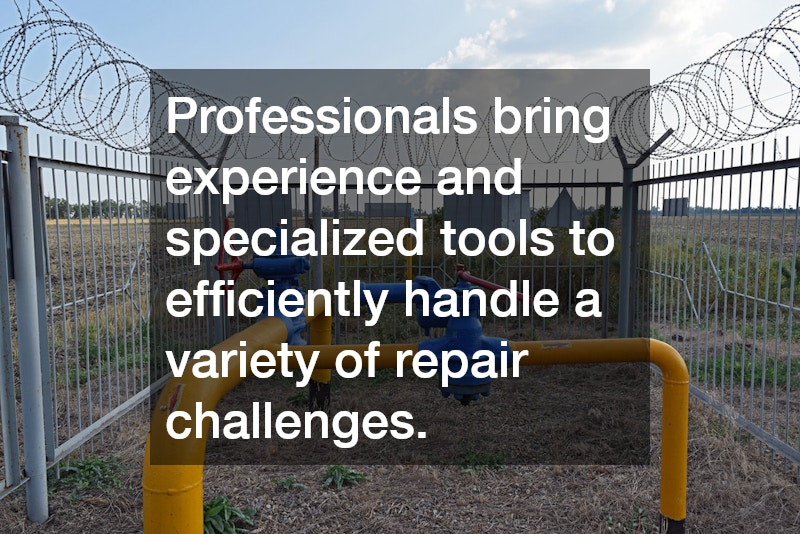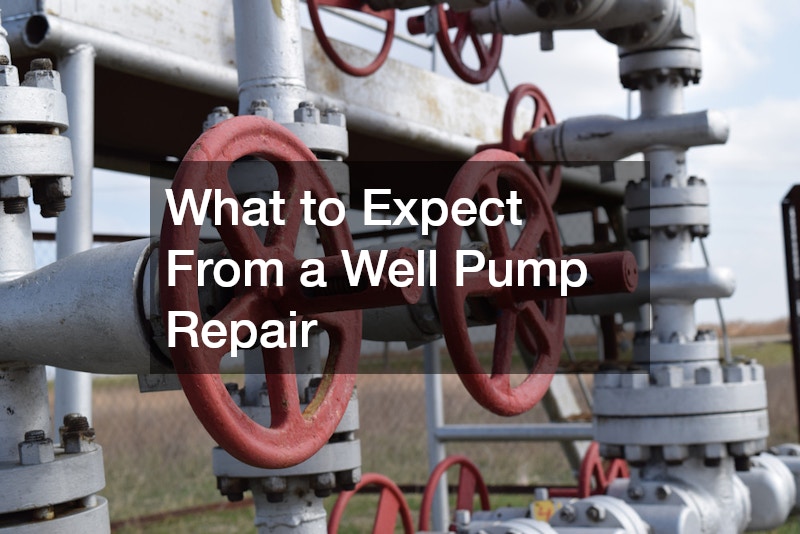Understanding what happens during a well pump repair can save you time, money, and stress. This article provides an in-depth look into the essential aspects and common questions surrounding a well pump repair, helping homeowners become better informed about their water supply systems.
How Do I Know if My Well Pump Needs Repair?
Signs of a Faulty Well Pump
Explore the common indicators of a malfunctioning well pump, such as irregular water flow, unusual noises, and air spitting from faucets. These signs are usually the earliest indicators that something is amiss with your well pump system.
If you notice a significant drop in water pressure, it might be time to inspect your well pump. Additionally, higher electricity bills can hint at a pump overworking due to underlying issues.
Ignoring these signs can lead to more costly repairs down the line. By recognizing problems early, you can address them promptly and maintain the consistency of your water supply.
Common Causes of Well Pump Problems
Discuss the typical reasons that lead to well pump failures, including electrical issues, wear and tear, and component malfunctions. Electrical issues often arise from damaged wires, leading to inconsistent pump operation.
Over time, a well pump’s components can deteriorate due to natural wear and tear. Bearings, seals, and other parts eventually weaken, leading to reduced pump efficiency.
Additionally, environmental factors like sediment buildup can obstruct the system’s proper functioning. Regular maintenance and inspections can help prevent these common issues from escalating.
What Are the Costs Involved in a Well Pump Repair?
Standard Repair Costs
Provide an overview of average costs associated with repairing a well pump, breaking down expenses for labor and materials. Generally, repair costs can range from a few hundred to several thousand dollars.
Labor costs largely depend on the complexity of the repair needed and the professional’s experience. Material costs can vary based on the types of parts required for the repair.
Understanding the standard costs can help homeowners budget effectively for potential repairs. Preparing financially can ease the stress associated with unexpected well pump issues.
Factors Affecting Repair Costs
Examine variables that may impact the cost of a repair, such as pump type, depth of the well, and the severity of the damage. The type of pump, whether it’s submersible or above-ground, can significantly alter repair costs.
The well’s depth also plays a crucial role; deeper wells might incur higher labor expenses due to their complexity. Moreover, the extent and location of the damage could necessitate additional time and resources for resolution.
Accessibility can also increase repair costs, as specialized equipment might be needed in challenging terrains. By understanding these variables, homeowners are better equipped to manage financial expectations.
How Long Does a Well Pump Repair Take?
Typical Repair Timeframes
Outline standard timelines for different repair scenarios, from minor fixes to more extensive overhauls. Simple repairs may only take a few hours, whereas more comprehensive tasks can span over several days.
A quick fix could involve replacing minor components, which is less time-consuming if parts are readily available. Conversely, significant malfunctions like a pump replacement will understandably take longer.
Timeframes vary widely based on the specific issue and its challenges. Being informed about these timelines allows homeowners to plan accordingly during repair interventions.
Factors That Could Extend Repair Duration
Identify factors that might lengthen repair time, such as accessibility issues, the need for special parts, and severe weather conditions. If the pump is located in a remote area, technicians may require additional time for access.
Sometimes, special or custom parts need to be ordered, causing delays in completion. Moreover, severe weather can temporarily halt repair efforts, especially when dealing with excavation or outdoor installations.
Unexpected complications can also arise as repairs progress, necessitating further attention beyond initial estimates. Homeowners should remain flexible with timelines in case of unforeseen setbacks.
Can I perform Well Pump Repairs Myself?
DIY Repair Considerations
Discuss the risks and benefits of attempting DIY well pump repairs, including safety precautions and technical challenges. While DIY repairs can reduce costs, they often carry significant risks if performed incorrectly.
Homeowners should assess their skill level and the tools required before deciding on a DIY approach. Technical challenges could exacerbate existing issues if not handled with care and precision.
Safety should always be a primary concern; well pumps involve electrical components that can pose hazards. When in doubt, consulting with a professional can prevent accidents and ensure efficient repairs.
When to Call a Professional
Highlight scenarios where professional intervention is recommended, emphasizing the importance of experience for complex repairs. Situations involving electrical faults or comprehensive diagnostics typically require professional skills.
Professionals bring experience and specialized tools to efficiently handle a variety of repair challenges. Their insight ensures that issues are diagnosed correctly and addressed effectively, reducing the risk of future problems.
Recognizing the limits of your capabilities is crucial for maintaining the integrity of your water system. Engaging a professional can ultimately save you time and protect your investment in the long run.
A well pump repair can initially seem overwhelming, but understanding key aspects, recognizing problem signs early, and knowing when to involve professionals can simplify the process. Being informed enables you to handle pump issues well, effectively, ensuring your water supply remains reliable.

